| 12/3/2025: Tennessee Special Election: Post-Mortem [RightDataUSA] | |||||||||||||||||||||||||||||||||||||||||||||||||||||||||||||||||||||||||||||||||||||||||||||||||||||||||||||||||||||||||||||||||||||||||||||||||||||||||||||||||||||||||||||||||||||||||||||||||||||||||||||||||||||||||||||||||||||||||||||||||||||||||||||||||||||||||||||||||||||||||||||||||||||||||||||||||||||||||||||||||||||||||||||||||||||||||||||||||||||||||||||||||||||||||||||||||||||||||||||||||||||||||||||||||||||||

Democrats were counting on Santa coming early to Tennessee this year.

Photo credit: Tennessee Star
Van Epps' win was quite an important result, given the narrow GOP margin in the House, and the amount by which he triumphed is not nearly as important though it will be the subject of rigorous analysis in the media for the next few days before being forgotten.
We have already highlighted much of the Tennessee Democrat's nutzoid viewpoints here, but of course few if any of those things were featured in Aftyn Behn's campaign ads. Instead, those ads focused on the economy, health care, and of course hating on Donald Trump and Republicans. Behn campaigned as a populist rather than as the woke lunatic she really is. She didn't fool quite enough voters, but she did make a dent in the customary Republican MOV in TN-7. DNC chair Ken Martin called Behn's performance "historic", and "a flashing warning sign for Republicans heading into the midterms". Behn hinted that she may run again for Congress in 2026 (please do!), but Democrats are probably not quite so stupid as to allow that. Will anyone admit she was a bad candidate, or at least that she was just an experiment to see how a complete left-wingnut would fare in a low-turnout special election in a supposedly "deep red" district? Will they really stick to this approach going forward? A Democrat who is less radical than Behn would undoubtedly have fared better on Tuesday. In the end, what we have here is yet another "moral victory" for Democrats to go with the actual victory for Republicans. The same thing happened 8 months ago in a couple of special elections in Florida, with Republicans winning and retaining those seats -- but they won by only half as much as they were "supposed" to. Democrats spent an inordinate amount of money trying to purchase an actual "solid red" district (FL-6), but they failed miserably there too. Because Republican Randy Fine won that election by only 14 points instead of 28 points in the R+14 district, Democrats were outwardly cheerful then too despite losing by over 25,000 votes. Today's talking points regarding this tremendous Democrat victory (LOL) on Tuesday:
There is at least one kernel of truth contained within all the spinning, and that is point number two. For example, the recent re-map in North Carolina may help pick up one (1) seat for the GOP in 2026, however at least half a dozen Republican incumbents are endangered in the Tarheel State; the Republicans are still favored in their respective districts but in a "blue" wave a lot of them could drown. Meanwhile in California, the recently-approved Democrat gerrymander not only eliminates 4 or 5 GOP House seats, but also protects half a dozen Democrat incumbents who may have been vulnerable without the new map. When Republicans get into a gerrymandering war with the experts at such things -- Democrats -- they may find themselves outclassed even if the courts actually permit the new GOP maps to be used. 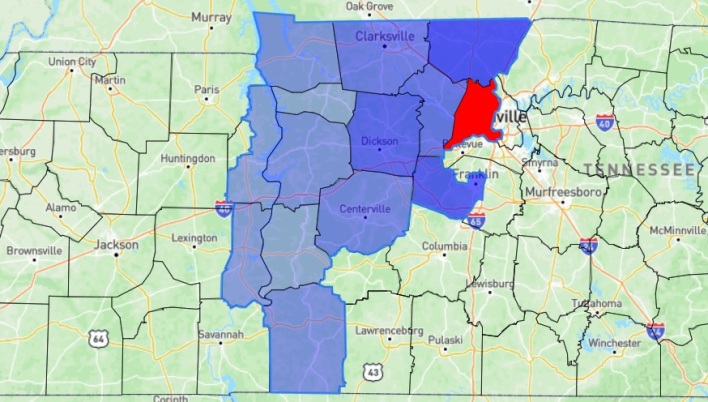
TN-7 results: December, 2025 special election
Election report card:
Montgomery County was disappointing for Van Epps, but the ones other than Nashville saved him. We said, regarding the 2024 House election: "In the other 12 counties combined, Green took over 72%. Van Epps had better get 65% or more, even if he can't quite muster 72%". He got 68.7% in the 12 counties outside of Davidson & MontCo. Generally, the farther away a county is from Nashville, the less it swung to the left on Tuesday (Robertson being an exception; it is adjacent to Nashville but did relatively well for Van Epps anyway). We asked: "Does 54.3% of the 2025 primary vote going to the GOP mean anything for the general election? If so, it probably just sets an upper limit for Van Epps". He took 53.9% as it stands now, very close to that theoretical limit. The relative party vote shares in primary elections in House races rarely forecast general elections with such precision as we saw in TN-7 in both 2024 and 2025. Turnout was certainly a factor, with the early/absentee ballots (which always favor the left) being insufficient to get the Democrat over the hump. We said: "Even with visions of 2018 dancing in Democrat heads, it's possible that turnout next week will not reach that 2022 number (181,000). . . and low pre-election day turnout here -- if it stays low -- may actually favor Republicans". Turnout in 2025 was 180,000 with still a tiny number of votes possibly remaining to be counted. Rats needed a repeat of 2018 as far as motivation was concerned; instead they got a repeat of 2022. That wasn't bad at all for a special election, but not nearly enough to tip the scales. We also predicted a Van Epps win "by 2 or 3 points". His MOV was 8.9% and that, under the circumstances, is a significant accomplishment even if it's not anywhere close to the 16% GOP lean of the district. Democrat money, motivation and organization had a big impact (as they always do in low-turnout special elections), but those things didn't make a big enough impact because Republican voter turnout on Election Day dwarfed that of the Democrats'. As we have noted above, the outcome in TN-7 was quite similar to the special election in FL-6 in April -- with the GOP winning, but only by half the normal amount. As in FL-6, although they invested heavily in the special election and claimed a moral victory, Democrats will not be spending quite so outrageously in 2026 in solid "red" districts, so Van Epps should be safe in TN-7 (except perhaps in a primary) from this point through at least 2030. One final word about this district: of the 435 House districts nationwide there are 212 which lean R; 5 are rated even; and 218 lean D, not factoring in any of the 2025 redistrictings yet. TN-7 is rated as R+8, which ranks it only as the 139th most Republican district in the country (tied with 12 others). Even if you accept Charlie Cook's rating of R+10 instead of our R+8, that would rank TN-7 121st at best. In either case, that's a curious definition of "dark red". It's just ordinary red, that's all. But the media and other Democrats are obliged to make it sound to their unenlightened followers as if the greatest upset in election history almost occurred here. Tags:
2025
Tennessee
Special election
Merry Christmas!
| |||||||||||||||||||||||||||||||||||||||||||||||||||||||||||||||||||||||||||||||||||||||||||||||||||||||||||||||||||||||||||||||||||||||||||||||||||||||||||||||||||||||||||||||||||||||||||||||||||||||||||||||||||||||||||||||||||||||||||||||||||||||||||||||||||||||||||||||||||||||||||||||||||||||||||||||||||||||||||||||||||||||||||||||||||||||||||||||||||||||||||||||||||||||||||||||||||||||||||||||||||||||||||||||||||||||
| 11/27/2025: Tennessee Special Election: Do Republicans Need Another Wake-up Call Already? [RightDataUSA] | |||||||||||||||||||||||||||||||||||||||||||||||||||||||||||||||||||||||||||||||||||||||||||||||||||||||||||||||||||||||||||||||||||||||||||||||||||||||||||||||||||||||||||||||||||||||||||||||||||||||||||||||||||||||||||||||||||||||||||||||||||||||||||||||||||||||||||||||||||||||||||||||||||||||||||||||||||||||||||||||||||||||||||||||||||||||||||||||||||||||||||||||||||||||||||||||||||||||||||||||||||||||||||||||||||||||

Photo credit: The Tennessee Conservative
On December 2 there will be a special election in Tennessee's 7th Congressional District to fill the vacancy which was caused when Republican Mark Green resigned from the House in July to "take a job in the private sector". The GOP currently controls the House by the count of 219-213. There are two vacant Democrat seats (TX-18, NJ-11) which will be easily retained by other Democrats when the special elections for those seats roll around next year. The outcome of this Tennessee election next week will determine whether the Republican advantage is eventually 5 seats (220-215) or 3 seats (219-216).
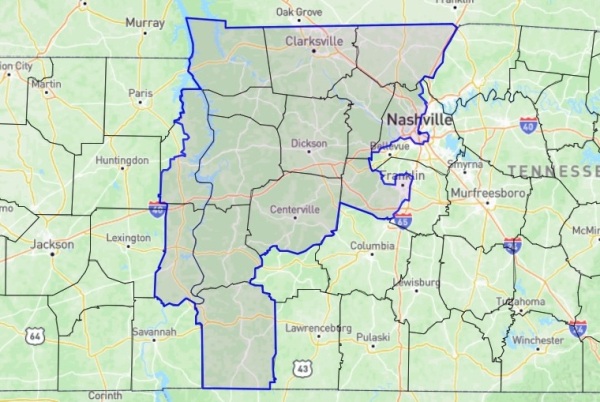
Current map of Tennessee congressional district 7
In 2021 Tennessee Republican redistricters did something that their colleagues in other states were too chicken to do. They broke up a Democrat district (CD-5) which caused Republicans to pick up one House seat as of 2022. CD-5 formerly contained all of the city of Nashville, and therefore was heavily Democrat. But for 2022 and beyond the city was split into three pieces, and those pieces were attached to heavily Republican suburban and rural territory. CD-5 incumbent Democrat Jim Cooper saw what he would be up against in 2022, and opted to retire.
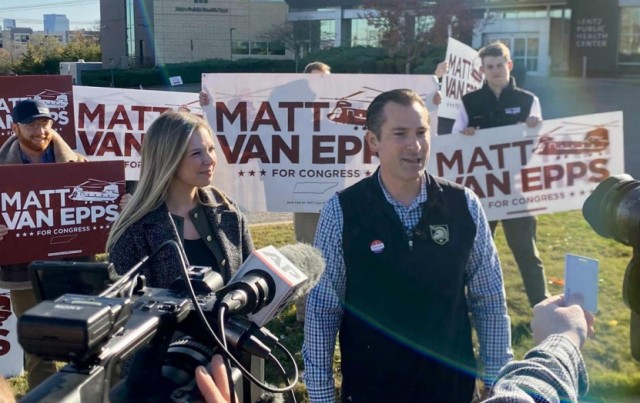
Photo credit: Nashville Tennesseean
GOP nominee Matt Van Epps is a West Point graduate, U.S. Army veteran and current member of the Tennessee Army National Guard. He is a former official in the administration of Tennessee Governor Bill Lee, most recently as director of the state's Department of General Services. Van Epps previously served as Lee's "COVID Czar", which is not exactly a resume-enhancer. Van Epps, like Lee, is considered by many to be a member in good standing of the squishy GOP establishment. There was an 11-way Republican primary in October, which was decisively won by Van Epps after he received the endorsement of President Trump, much to the dismay of conservatives.

Photo credit: Tennessee Star
His opponent, radical leftist Aftyn Behn, could hardly provide a more stark contrast.
Any one of the above would make a great campaign ad for Republicans. But are they on the air with any of this? Or are they just making a few posts on Twitter? Polling and other data: A new Emerson poll as of 11/26 shows Van Epps up but a very close race. Why should we trust anything Emerson says? Look at their forecast of the New Jersey Governor election -- they had the Republican losing by just 1 point. Just because they were delighted to be wrong about the extent of Jack Ciattarelli's defeat, doesn't make them any less wrong. Some observers have noticed what appears to be an oddity in the internal breakdowns of yesterday's Emerson poll. Trump won Tennessee's 7th Congressional District with 60.4% of the vote in 2024. Yet Emerson has only 53.6% of their polling sample as being Trump voters. We concede that turnout and motivation are much different now than they were in 2024; to slightly modify a common phrase which is popular among losers: "12 months ago is an eternity in politics". But have things really moved 7 points to the left in CD-7? Haven't we been assured by the GOP establishment and other deniers of reality that everything bad which happened three weeks ago was confined to "blue" states only? So it can't happen here -- or can it? As far as financial data, the latest FEC reports on this election are from two weeks ago. At that time the Democrat had raised about 25% more money than the Republican (what else is new?) but had spent slightly less. Even based on those somewhat out-of-date figures, Behn had about $300,000 more cash-on-hand than Van Epps did, heading into the final 3 weeks of the campaign. You can be reasonably certain that in those final 3 weeks, the Democrats have raked in, and will spend, far more than the Republican. That fact will be apparent when the final FEC reports become available. 
Photo credit: Drill Down with Peter Schweitzer
Nearly all of the $1.2 million which Behn has raised allegedly comes from "individual" contributors. The Democrats' ActBlue Laundromat routinely splits billionaire donations into tiny fragments and assigns those fragments to unaware individuals in a process known as "smurfing". This creates the illusion of broad "mom-'n-pop" support (not to mention evading campaign finance laws) and allows the Democrat to declare with a straight face that she is a candidate "of the little people". Van Epps, on the other hand, must rely on actual individual contributions, and those have been insufficient to be competitive in a high-stakes race like this one. To bridge the fundraising gap, the Republican has had to take a substantial amount (about 30% of his receipts) from PACs.
In 2024 Mark Green won 13 of the 7th District's 14 counties, losing Davidson County (Nashville) by 26,000 votes but winning overall by 69,000 votes. Nashville gets all of the hype in the district but cast only 22.3% of the vote in 2024. The city will give Behn a substantial majority next Tuesday; Nashville voters hate Republicans more than the Democrat nominee hates Nashville. It's a complex relationship, LOL. Montgomery County, with 24.1% of the vote, is the top vote-producer in the district and carries a little more weight than Nashville. Green won Montgomery by 19.7% in 2024; Van Epps will not approach that number. In the other 12 counties combined, Green took over 72%. Van Epps had better get 65% or more, even if he can't quite muster 72%. So how do all those figures from just 12 months ago suddenly translate into a very close race now? They shouldn't. Green's performance last year was not an anomaly: even though the Democrats fielded a candidate who was a felon (but a cute one!), you can't say they didn't try to win in 2024; they spent $1.25 million, more than they spent in the other two Nashville-area districts combined. Even though Republican Andy Ogles in CD-5 was declared by the media to be vulnerable, the Democrats mostly bypassed Ogles and focused more resources on opposing Mark Green instead. Ogles won by nearly 20% in CD-5, almost the same MOV that Green attained in CD-7. Primary data: There were 53,483 total votes in the 2024 House primaries in CD-7, 59.6% of which went to the unopposed GOP candidate. Green then got 59.5% in the general (some little-known independent took 2.4%). It was just a coincidence that the primary vote share was so close to Green's general election percentage, but not a complete coincidence. There were 67,886 total votes in the 2025 special election primaries, 54.3% of which went to Republicans. Democrats are seizing upon this data point, claiming it is an indicator of a substantial shift in their direction. However, the fragmented Rat primary and Behn's lack of endorsement by the primary losers could indicate an upcoming underperformance for her in December. It's a nice thought, but don't bank on it happening. The Republican primary was just as split as the Democrats', and the wounds inflicted there have not healed. On the Democrat side, money makes up for a lot of hurt feelings. Does 54.3% of the 2025 primary vote going to the GOP mean anything for the general election? If so, it probably just sets an upper limit for Van Epps. There will be 4 independent candidates on the ballot, one of which is a former Republican. Altogether they will take 2 or 3 percent of the vote at most. Conclusion: All pertinent factors indicate a close race (within 5 points one way or the other). No factors indicate an easy GOP win. The factor which favors the Republicans to the greatest degree is the most irrelevant one of them all -- the PVI. PVIs are created based on regularly-scheduled elections with high turnout, and 2025 is not going to be one of those. There were 323,000 votes cast in CD-7 in the presidential year of 2024; turnout was 181,000 in midterm 2022, but it was a little over 250,000 in 2018 (the last midterm in which Democrats were motivated by as much hatred as they now possess). Even with visions of 2018 dancing in Democrat heads, it's possible that turnout next week will not reach that 2022 number. As of 11/26, 84,000 votes had been cast either early or absentee. That doesn't sound like much to us, and low pre-election day turnout here -- if it stays low -- may actually favor Republicans. We'll see. There are still a few days of pre-election voting to come, and they could be busy days. Tennessee's 7th Congressional District is now rated as R+8 (Charlie Cook says R+10 based on his limited data). A rating of R+8 means that a Republican typically wins by 16 points. This race is going to be way closer than 16 points -- or even 10 points. As in nearly all special elections, Democrat money, organization and motivation are running very high, almost as high as Republican apathy. These factors, plus polling (such as it is) all indicate an outcome that is basically a tossup despite the overall Republican lean of the area. Prediction: We'll say Van Epps win by 2 or 3 points. If that estimate turns out to be significantly off the mark, it will be in the wrong direction -- just like many people's estimates in New Jersey and Virginia were on November 4th. Tags:
2025
Tennessee
Special election
| |||||||||||||||||||||||||||||||||||||||||||||||||||||||||||||||||||||||||||||||||||||||||||||||||||||||||||||||||||||||||||||||||||||||||||||||||||||||||||||||||||||||||||||||||||||||||||||||||||||||||||||||||||||||||||||||||||||||||||||||||||||||||||||||||||||||||||||||||||||||||||||||||||||||||||||||||||||||||||||||||||||||||||||||||||||||||||||||||||||||||||||||||||||||||||||||||||||||||||||||||||||||||||||||||||||||
| 11/13/2025: An Electoral S.A.T. Math Question: "2025 Is To 2017 As 2026 Is To ____ ?" [RightDataUSA] | |||||||||||||||||||||||||||||||||||||||||||||||||||||||||||||||||||||||||||||||||||||||||||||||||||||||||||||||||||||||||||||||||||||||||||||||||||||||||||||||||||||||||||||||||||||||||||||||||||||||||||||||||||||||||||||||||||||||||||||||||||||||||||||||||||||||||||||||||||||||||||||||||||||||||||||||||||||||||||||||||||||||||||||||||||||||||||||||||||||||||||||||||||||||||||||||||||||||||||||||||||||||||||||||||||||||
The election results from November 4, 2025 bear a striking resemblance to those from November 7th of 2017. In the aftermath of the 2025 Democrat sweeps in Virginia, New Jersey, New York City -- and elsewhere -- most right-wing analysts are trying to appear calm as they whistle past the graveyard in their attempts to dismiss the disaster as "completely expected", "limited to 'blue' states", "unimportant" and, most of all, "meaningless as far as next year's midterms are concerned".
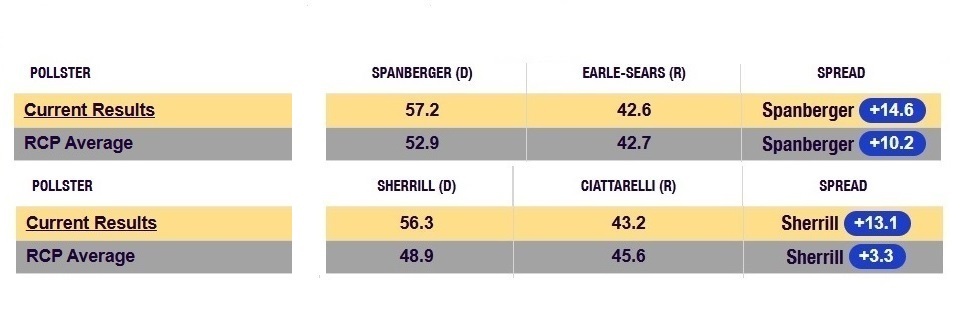
The polls sure were wrong -- but not the way we wanted them to be.
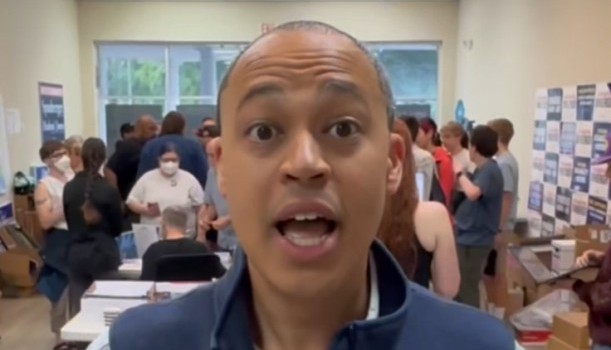
Possibly thinking: "Wow, the voters agreed with me! Republicans (and their children) DO deserve to die!"
Regarding the Republicans' gubernatorial defeats: it's one thing to be expected to lose, it's another thing to be completely obliterated and to have the calamity permeate the entire election ballot to the point where Republicans also hemorrhaged seats in the Virginia House of Delegates and the state Assembly in New Jersey.
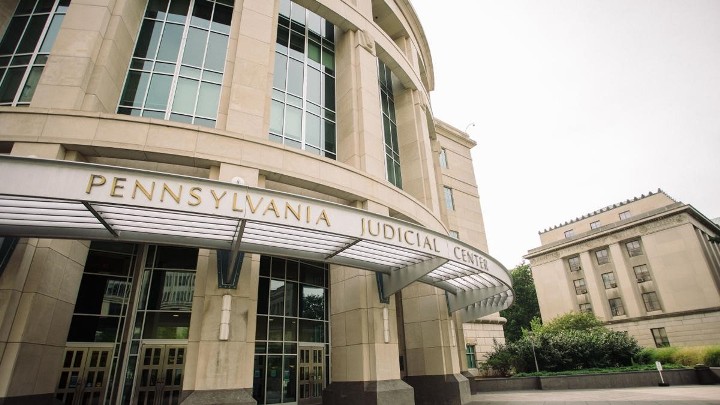
In 2025, Democrats cemented their control of the PA Supreme Court for years to come.
Pennsylvania voters had the opportunity to send those judges packing. Instead, all three judges who were up for retention were overwhelmingly returned (by nearly 25-point margins) to the court for another 10-year term. The PA Democrat Supreme Court thus maintains its 5-2 majority, and one of the two Republicans on the court barely qualifies as such; there is only one true Republican out of seven judges on the PA Court.
"Unimportant". . . "Not a big deal": Virginia, like some other solid "blue" states, is considering congressional re-redistricting. Virginia Democrats, soon to be in complete control of state government, would like to imitate California and disenfranchise Republicans via extreme gerrymandering. The results from last Tuesday surely embolden those Democrats. A small minority of New York City voters just elected a radical alien socialist as mayor. Tell the good people of California, Virginia and New York City that these results are "not a big deal". But the tiny, fragile twig that GOP pundits are seriously attempting to hang their hats on is this one: These results mean nothing for the future because "things change", "twelve months is an eternity in politics", blah blah blah. Platitudes, wishful thinking and other drivel are a poor substitute for actual analysis. On this website, we look at data rather than "feels". With the results from 2025 being so uncannily similar to the ones from 2017, it would be idiotic not to examine the results from 2018 and see how they might be pertinent to the upcoming 2026 midterms even if those midterms are "an eternity" away at this moment. The similarity of 2017 to 2025 is parallel to the relationship between 2016 and 2024. In 2016 Donald Trump won the presidency with 304 electoral votes and took 30 states. He won 45.9% of the popular vote. In 2024 Trump won the presidency again, this time with 312 electoral votes and 31 states (adding Nevada). He received 49.7% of the popular vote, the improvement coming not at the expense of his Democrat opponent but from the deterioration of third-party candidates, whose vote share was 4% less in 2024 than it had been in 2016. Kamala Harris actually took a greater percentage of the popular vote (48.2%) than Hillary Clinton had (48.0%). The parallel doesn't quite carry over to the House, where Republicans were in much better shape after 2016 than they are after 2024 (a net loss of 21 seats). But that's mainly because of what happened in 2018 -- which is the whole point here -- with the GOP losing many seats. Those losses were only partially offset in 2020 and 2022. After 2016 Republicans controlled the Senate by 52-48. After 2024 they now have a 53-47 advantage. That's pretty similar. Having compared 2024 to 2016, let's now shift one year and consider 2025 vs. 2017. Because 2021 was a significant factor in the false optimism which accompanied future elections in New Jersey and Virginia, we will show data for that year as well. 2017:
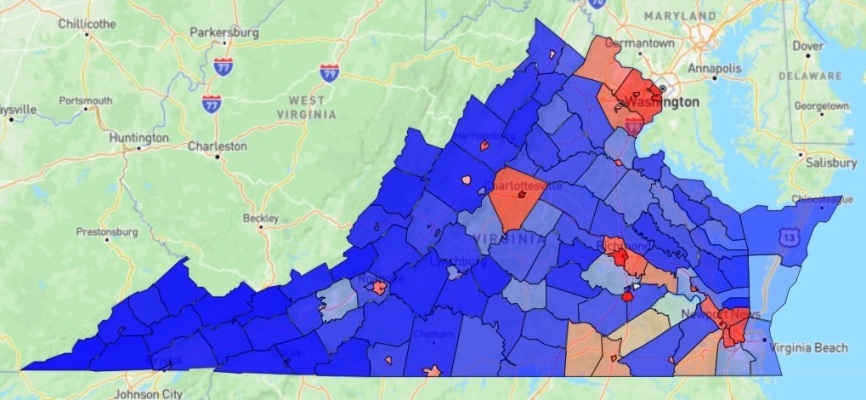
Happier days: 2021 gubernatorial election results in Virginia 2021:
Adding to the false hope in NJ was Trump losing by "only" 5.9% in 2024 and Curtis Bashaw losing by only 9.7% for the Senate. Also there was a voter registration shift to the right, a net change of 100K between 2022 and 2024, but the Rats were still up 900K (13.5%). In 2025 things improved, with the GOP being down 855K and 12.9%. Whoopee. As far as the 2025 elections in New Jersey were concerned, that wasn't false hope -- that was no hope. Turnout helped Republicans overcome some of their disadvantages in NJ in 2021 (registration deficit and state-level gerrymander) but things would return to normal in 2025 despite the indications from some occasionally cheery -- but sadly inaccurate -- pre-election polls. In Virginia there was an actual basis for hope after 2021 -- for a little while. There are no partisan voter registration stats to go by, however the election results were so encouraging that Republicans were expecting further gains in 2023 and 2024. In 2023 they failed to pick up the one state Senate seat they needed to get to 20-20 (GOP Lt. Governor would break the tie), and they lost 3 seats in the state House of Delegates, which was the exact number required to lose the House, giving Democrats full control of the state legislature and derailing any agenda GOP Governor Glenn Youngkin may have had. In 2024 Trump reduced his deficit from 10.1% to 5.7%, but his margin of defeat (260,000 votes) was still the second-worst of any GOP candidate in Virginia history, second only to Trump in 2020. Even in percentage terms it was the worst (aside from 2020) of any GOP nominee since Goldwater in '64. False hope extended to the 2024 senatorial campaign of Republican Hung Cao, whose 2022 showing as a House candidate in CD-10 was considered to be impressive. He lost by merely 6.5% that year in a district which was designed to give the Democrat a 10-12 point win. Whoopee again. Many delusionals thought that Cao could keep it close against Timmy Kaine in 2024, but few polls ever had him within single digits. Cao "overachieved" again. He only lost by 9 points. There was no false hope regarding GOP chances in Virginia in 2025; there was no hope at all aside from perhaps the Attorney General race. Polls showed a tossup but it turned out that a majority of Virginia voters agreed with the Democrat candidate on the pertinent topic of slaughtering Republicans and their children. 2025:
Republicans can be thankful for the lack of state Senate contests in NJ and VA in November, 2025; they couldn't lose more seats there if there weren't any elections. 2025 New Jersey gubernatorial results by region:
The above results for the 2025 Governor election are of course still unofficial (data as of 11/10) but are at least 95% complete in most counties. We defined the regions of New Jersey here: November 2025 Gubernatorial Elections -- New Jersey & Virginia. The Republican percentage of the vote collapsed to pre-2021 levels in all regions, even if not quite (in some areas) as bad as the GOP percentages from 2017 . Only in the Central Coast area did Jack Ciattarelli compare favorably at all to his results from 2021. In every other region of the state he finished well behind not only his surprisingly competitive 2021 performance but also behind Trump's mediocre showing in 2024. GOP results in the critical (and supposedly right-trending) northern part of New Jersey were especially disappointing. South Jersey was also a disaster for Ciattarelli. He had come barely one point away from winning that region in 2021 but lost it by a whopping 15 points last week. As we predicted, turnout in the ghetto areas of New Jersey returned to normal from the 2021 dropoff. That certainly wasn't good news for the Republican, but his problems were hardly confined to the worst areas of the state. Also, slightly-improving voter registration figures apparently aren't a guarantee of electoral success -- especially when those voters decline to participate. 
Artist's conception of the GOP's 2018 election results
Back to 2018:
An ongoing story throughout 2018 was the number of Republican incumbents in the House of Representatives who suddenly decided that they would not seek re-election in November. There were 23 Republicans who declined to run again for any office, and 11 other House Republicans who chose to run for a different office. Many of these 34, such as former House Speaker Paul Ryan, were anti-Trump moderates or liberals in marginal districts who were content with the prospect of potentially being replaced by Democrats. When trying to explain the debacle which resulted that November, with the GOP losing 40 House seats, the voluntary exodus was a convenient excuse albeit a false or at least incomplete one. Of the 34 Republicans who walked away in 2018, only 10 of them were replaced by Democrats. That's a considerable number, but a far cry from 40. The far bigger reason for the Republican party demise was the 30 incumbents who ran for re-election and lost. Seven of the total of 40 GOP losses occurred in California, which had just legalized a new form of Democrat electoral chicanery known as "ballot harvesting". That tactic allows ballots to be collected and counted for weeks after election day. Of the 7 Republican seats which evaporated in CA, at least 5 of them required "extra time" for the Democrat to eventually prevail. In 2018 the Real Clear Politics generic congressional polling final averages were GOP 44.9%, Democrat 53.3%. That polling could hardly have been more accurate -- after all the ballots were finally counted, the House vote share was GOP 44.8% (was 49.1% in 2016), Democrat 53.4% (was 48.0% in 2016). In case you're wondering about 2026 at this point, the current RCP congressional polling averages are GOP 42.0%, Democrats 46.1%. There are still lots of undecideds 12 months out from the election, but that 42.0% mark is abysmal. The whistlers past the graveyard now have another data point to ignore if they intend to remain adamant that 2026 can't possibly be as bad as 2018 was. Senate results from 2018
The House went up in flames but Election Night 2018 was a good one for Republicans in the Senate. Good, but not great. The 2017 GOP defeat in Alabama had left the Republicans with a narrow 51-49 majority. In 2018 they picked up 4 Senate seats (FL, IN, MO, ND) but also lost a pair of seats which they had previously held (AZ, NV) for a net +2. For a little while there also seemed a possibility of the GOP losing Thad Cochran's seat in Mississippi.
Here, at last, is how the playing field stands as we head into 2026: Before we look at the prospects for the House in 2026, let's quantify what happened in 2018. In 2018 there were 80 districts (out of 435) across the nation which we would classify as marginal -- being in the range of D+5 to R+5. Those 80 are worth examining because they were the districts most likely to change hands. During any kind of "wave" election, as we saw in 2018, obviously more of them will change hands. Districts which are outside the marginal range are normally considered safe unless there is a wave of unusual intensity or there are other circumstances which make an incumbent vulnerable despite the lean of his district. Some facts about those 80 marginal districts in 2018:
Additionally, Republicans lost 8 House seats which were not in the marginal range and were assumed to be at least moderately safe. Six of those 8 districts saw GOP incumbents bite the dust; only 2 were open seats (one more dagger in the feeble "we lawst just coz of all the re-tyre-mints!" argument). The above data illustrates the impact of the 2018 "blue" wave in the House. Even though the 80 marginal districts tilted slightly to the right on average, Republicans still managed to lose 61 of the 80. And on top of that the 8 others which were supposed to be safe-ish. That's what a massacre looks like, so you'll recognize it if you see one again in 2026. As noted, the "marginal playing field" was tilted towards the Republicans in 2018. If the parties had won every tossup district in which they were favored and then split the 10 even districts, Republicans won have won 53 out of those 80 districts instead of just 19 of 80, a difference of 34 seats. Give the GOP 34 more House seats in 2018 (they would've had control, 234-201) and suddenly the second half of Trump's first term looks a lot different. We have looked at all House districts for 2026, factoring in new maps in Texas, Missouri, Ohio, North Carolina and California and we are assuming they are not overturned in court prior to ever being used. Try to look surprised when the partisan Democrat gerrymander in California passes judicial muster but Republican maps elsewhere do not. A new Democrat gerrymander was just approved on November 11 by a liberal judge in heavily-Republican Utah, which creates two more marginal districts (not being counted here yet) and very well could cause two Republicans to lose in 2026. In Utah. Pending upcoming Democrat gerrymanders which are still on the drawing board in states like Virginia, Maryland, Illinois and Colorado, and pending the much-anticipated Supreme Court ruling which may remove the requirement for certain states to create anti-White districts, here is how the House battleground is taking shape for 2026: There are currently 91 House districts which fall into the D+5 to R+5 range according to our ratings. We count 41 of those districts as having GOP incumbents and 41 with Democrat incumbents. The remaining 9 districts have no incumbent running, and that number will increase over the next few months. Including currently open seats, Republicans must defend 45 districts and Democrats 46. That's about as even a breakdown as can be.
The likely effects of the ongoing redistricting currently are:
We will cover the Senate prospects for 2026 in a commentary which will shortly follow this one. Conclusion: With even more re-redistricting to come, forecasting the outcome of the 2026 U.S. House elections from this far out is just a guessing game. Democrat-controlled states including (but not limited to) Virginia, Maryland, Illinois, Colorado and New York are lining up to disenfranchise Republicans further whether the law permits them to do so at this time or not. Maryland has only one GOP congressman left to be exterminated, but those other states can do much more damage. As we've mentioned, even rock-solid Republican Utah is being forced by a liberal black-robed tyrant to hand over 1 or perhaps even 2 House seats to Democrats (Utah only has 4 altogether). Some Republican states, perhaps including Florida, Kansas, Nebraska and Indiana can do unto Democrats as Democrats in other states will be doing unto Republicans. But deep-"red" Indiana has already chickened out, Kansas (like Indiana and Missouri) could gain only 1 seat at most -- they all count, so don't scoff too much -- and the GOP can't gain any in Nebraska but can save one which otherwise is about to go down the toilet. Only in Florida is there the potential for a Republican state to get some "California-style" revenge on Democrats, but they could overextend themselves and wind up worse off than where they started (as could easily occur in North Carolina). The Supreme Court may come to the rescue. Do not hold your breath waiting for that. A case is pending, brought by a group of White voters in Louisiana who are challenging the racist congressional district map which was demanded by a judge and then used for the 2024 House elections. These disenfranchised voters are suing in an attempt to strike down a map which created a second black-majority district in their state. If the USSC rules in favor of the plaintiffs, professional racists are concerned that all racist Democrat gerrymandering everywhere -- which has been "the law" since at least the early 1990s -- will collapse, thereby eliminating several districts ("19" is the magic number they keep quoting) which are currently held by black Democrats, and those Democrats will all be replaced by White Republicans. As a result, the GOP would firm up its control of the House such that no amount of Democrat gerrymanders in California, Virginia, New York, Illinois or wherever can offset. This is utter nonsense. First the case has to actually be decided and the Supreme Court is in no hurry, especially in an election year; it will surely be 2026 before anything happens. Secondly, the court has to decide the right way. Does anyone really expect there to be 5 votes for doing the right thing here? John Roberts can almost certainly be relied upon to do the wrong thing. Again. Then there has to be sufficient time to draw new maps in the affected states. And sufficient time for the immediate Democrat lawsuits to be heard. And then those suits must be rejected so the new maps can be implemented. Good luck with all that. And then things have to work out the way panicky Democrats fear they will. Let's take a look at how the Democrat crystal ball came up with this cockamamie number of "19" seats which they claim are in jeopardy if the USSC disallows racist (i.e. Democrat) gerrymandering in certain southern states. Remember: this stuff was never about race; it was always about partisan politics. Whenever you see the word "black" or "minority" in some racist court ruling, replace that word with "Democrat" if you want to know the truth. As best we can guess from trying to interpret the feverish nightmares of Democrats, here are the Magic 19:
So there you have it: 19 House seats which are currently held by black Democrats. If the recently created maps in MO and NC hold up in court, then the GOP will be +2. If the Supreme Court does the right thing and does it promptly, there is a good chance for Republicans to reclaim the two seats (AL-2, LA-6) which black-robed leftist dictators stole from them in 2024. There will be no further developments in Missouri or North Carolina. That leaves Florida and Georgia as the only hopes for inflicting some damage on the Rats. That's much easier said than done. No matter what lies Democrats are telling about this upcoming court ruling, Republicans will never get anywhere near +19. Doing so would require them to eliminate most or all of the above districts and then create ones which will elect a Republican. And then have those district maps persist despite Democrat lawsuits. That's completely impossible, and Democrats know it. But they never fail to play the race card or the victim card whenever they can, the media swallows that shit up and then regurgitates it for the purpose of bamboozling low-info, low-intelligence voters into voting (D). The fluctuating re-redistricting landscape is making 2026 a unique year for which to forecast House elections, and that will be true until all maps are final. Even ignoring that factor for the moment, there is already substantial evidence to conclude that the 2026 results will mirror the results from 2018; conversely, at this time there is zero evidence (wishful thinking is not "evidence") that the 2026 results will not mimic 2018, at least as far as the general direction those results will take. To what degree that will happen is something that can't be anticipated with any precision yet. It's very possible that Congress in 2027-28 will look very much like the one from 2019-20, with Democrats -- no matter how slender their majority -- marching in lockstep in full control of the House ("Peach Mints are back on the menu immediately!") while disunited Republicans perhaps cling to nominal Senate control with a lame duck in the White House. Tags:
2025
2026 (uh oh)
Virginia
New Jersey
And just about everywhere else
| |||||||||||||||||||||||||||||||||||||||||||||||||||||||||||||||||||||||||||||||||||||||||||||||||||||||||||||||||||||||||||||||||||||||||||||||||||||||||||||||||||||||||||||||||||||||||||||||||||||||||||||||||||||||||||||||||||||||||||||||||||||||||||||||||||||||||||||||||||||||||||||||||||||||||||||||||||||||||||||||||||||||||||||||||||||||||||||||||||||||||||||||||||||||||||||||||||||||||||||||||||||||||||||||||||||||
| 10/24/2025: November 2025 Gubernatorial Elections -- New Jersey & Virginia [RightDataUSA] | |||||||||||||||||||||||||||||||||||||||||||||||||||||||||||||||||||||||||||||||||||||||||||||||||||||||||||||||||||||||||||||||||||||||||||||||||||||||||||||||||||||||||||||||||||||||||||||||||||||||||||||||||||||||||||||||||||||||||||||||||||||||||||||||||||||||||||||||||||||||||||||||||||||||||||||||||||||||||||||||||||||||||||||||||||||||||||||||||||||||||||||||||||||||||||||||||||||||||||||||||||||||||||||||||||||||
Although the elections may be tantalizingly close (in truth, they probably won't be that close), the likeliest outcome for the Republicans is. . .

The races have generally (but not consistently) been tightening in both states, especially according to polling organizations which are classified as Republican-leaning by liberal media sources. Some hardcore leftists (e.g. Washington Post) are cheerleading for a Democrat blowout in Virginia, but the ones who attempt to be less transparently liberal forecast the contests as being moderately competitive. Close though the races may be, as things stand now both Jack Ciattarelli (NJ) and Winsome Earle-Sears (VA) appear to be heading for losses. It's up to the good voters of New Jersey and Virginia to get out and vote and prove the pollsters wrong.
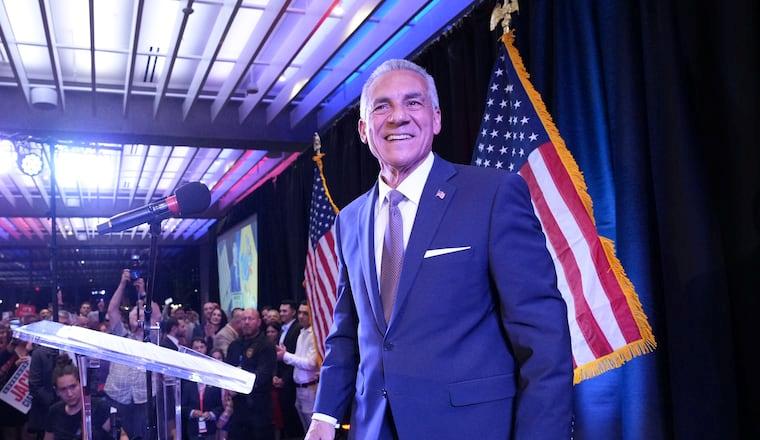
Photo credit: inquirer.com
Background:
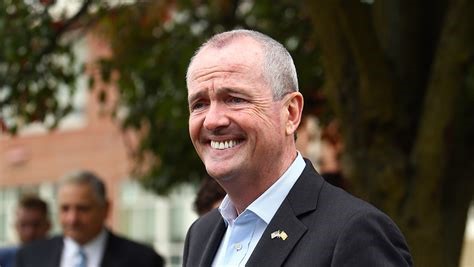
Photo credit: app.com
The 2021 election was mainly a referendum on Murphy's first term, with Ciatterelli being regarded as sufficiently bland and moderate to avoid alienating potential crossover Democrat voters which any Jersey Republican requires in order to have a chance of winning a statewide election. Murphy is a huge supporter of the illegal importation of new Democrat voters from foreign countries, and he designated New Jersey as a sanctuary state. He also took several steps to hinder the deportation of illegals, such as not permitting law enforcement to ask about immigration status. By 2021 many New Jersey voters had grown weary of the invasion and their disaffection hurt Murphy's re-election chances. Nor were the voters pleased with the numerous tax increases which were passed by the overwhelmingly Democrat NJ legislature.
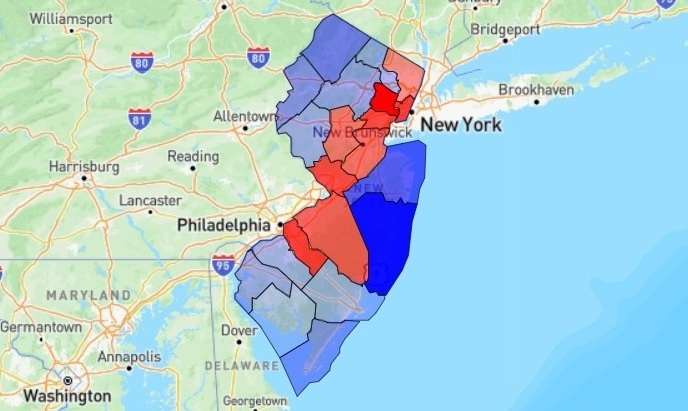
2024 presidential election results in New Jersey
Geography:
West Jersey and the Central Coast are the most Republican areas of the state; together they normally cast 28-30% of the statewide vote. Unsurprisingly, Ghetto Jersey is by far the most Democrat area of the state; it delivers about 18% of the statewide vote and gives a tremendous margin to whatever Rat is running. Of the three recent elections (2017 Governor, 2021 Governor, 2024 President) which we will be focusing on for the purpose of establishing trends, Trump did the best of any GOP candidate in this region, but still received only 32% of the vote. Central Jersey (epitomized by places such as Trenton, New Brunswick and Princeton) is consistent in its anti-Republicanism and provides approximately a 16-point margin for the Democrat while accounting for 16-17% of the statewide vote. South Jersey is the largest region both in land area and in number of votes. It accounts for about 22% of New Jersey's votes and can be marginal. It was heavily against Ciatarelli in 2017 but he nearly won there in 2021 before the region swung back a few points to the left against Trump in 2024. The Urbanized North is the most marginal region now and is the one which is moving most noticeably to the right although still slightly favoring the left. It is this area which GOP analysts see as the key if they are to win in New Jersey. Republicans have recently been competitive in the 9th congressional district which lies almost entirely in this region, despite being grossly outspent and despite a Democrat gerrymander which deliberately omits the better parts of Passaic County. Ciattarelli improved here by 12 points (net) between 2017 and 2021 and Donald Trump nearly won this region, losing by only 1.5% in 2024.
The next table shows the margin of victory (or defeat, if the number is negative) by region for the GOP candidate in these three elections:
Finally, the number of votes cast by region, along with the region's percentage of the statewide vote:
One of the keys to the near-upset in the 2021 gubernatorial election was the fact that many ghetto voters (Democrats, obviously) chose to sit that one out rather than vote for Murphy. The share of the statewide vote from Essex, Hudson and Union counties dropped nearly 2 percent. Those voters were re-energized in 2024 to vote against Trump and the statewide vote share from the 3 ghetto counties rebounded to where it had been in 2017. Anti-Murphy apathy will not be on the ballot in a couple of weeks, but anti-Trump motivation will be -- here and everywhere else where an election is taking place (at least in "blue" areas). As was the case in the disastrous election years of 2017-18, Trump is always "on the ballot" as far as the left is concerned. Turnout in these off-year races isn't quite as meager as it is for little-publicized special elections which often take place at odd times (i.e. not November), but turnout still does not approach presidential-year levels. That means motivation, organization and money are the key factors to generating turnout; Democrats are normally substantially ahead in all 3 of those factors, and it shows. Voter Registration: 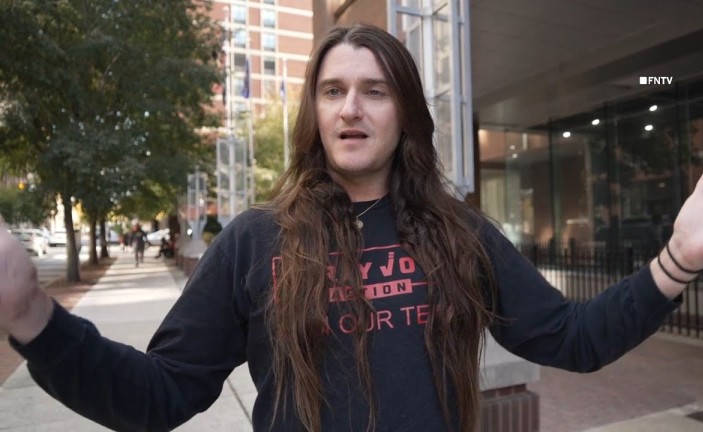
Photo credit: redlineheadlines.com
Scott Presler and his organization have worked diligently over the past couple of years to increase Republican voter registration counts in certain states. Presler focused on Pennsylvania during 2024 and has been given inordinate credit for the GOP victories which occurred there -- Trump's win along with that of Senator Dave McCormick, and the important pickup of two House seats (CD-7 and CD-8) in Eastern PA.
2025:
The last time Republicans achieved a 40.9% or greater share of voter registrations in a November election in PA was 2003. This November, Pennsylvania voters will have the chance to oust 3 Democrat members of the state Supreme Court. Those members, along with their liberal colleagues, are responsible for the hyper-partisan gerrymander which has affected not only congressional districts in Pennsylvania but state legislative districts as well. These gerrymanders cost Republicans 4 U.S. House seats (and almost 2 others) from 2019-2024 and cost 12 state House seats -- exactly enough to give Democrats control. Republicans have a chance to eliminate some of the justices who caused those events to happen, and perhaps gain a majority on the PA Supreme Court in the process. 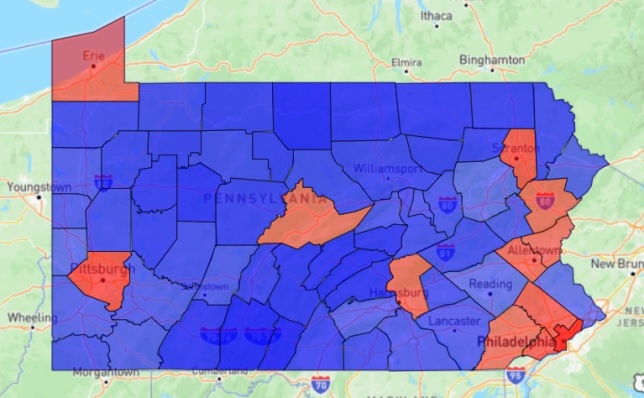
2024 PA voter registration, by county
After 2024, Presler and his vote registrars moved east to New Jersey in an attempt to turn that state "red". As in PA, trends in New Jersey were already favoring Republicans, although these trends have not manifested themselves in any victories. Trump's loss by 5.9% here in 2024 was actually the best showing for a Republican candidate since George Bush lost by only 2.4% in the 3-way election of 1992. Prior to 1992, the GOP won 6 presidential elections in a row in New Jersey before the state's demographics began to head rapidly south.
November 2024:
October 2025:
It is worth noting that a sizable number of New Jersey voters are neither Republicans nor Democrats. If the polls are correct, independents are favoring the Democrat by a substantial amount in the 2025 gubernatorial race. Going back to 2008, Republicans have added 614,894 voters in New Jersey and Democrats have added 742,790. However the recent data is more affirmative with the GOP registering large gains during 2024 and then almost as many again in 2025. Democrat registration has been stagnant during the past two years. Will the "Presler bump" in 2025 be enough to put Ciattarelli over the top on November 4? Current polling suggests it will not. He may be fortunate to lose by only as much as he did in 2021. Conclusion: It is being reported, even by far-left sources, that all is not well in Camp Sherrill despite her clear lead in nearly every poll. There has also been fear that black voters and other minorities will turn out at less than their usual rate, as occurred in 2021 (spoiler alert: that isn't going to happen again in 2025). The Naval Academy cheating scandal in which both Sherrill and her husband are allegedly involved isn't resonating at all with voters and (shockingly!) isn't being covered in the so-called mainstream media. Even lefties concede that Sherrill does not generate much enthusiasm, but the fact that New Jersey has nearly 1 million more Democrats than Republicans makes "enthusiasm" a rather moot point in the face of that landslide registration advantage. Furthermore, while comparatively few Democrat and independent voters may be excited about voting for Mikie Sherrill, they are probably quite motivated to vote against Donald Trump clone Jack Ciattarelli. Of course Ciattarelli is no such thing, but hatred is a powerful motivator for Democrats and no facts are going to be allowed to impede that hatred. Final prediction: Sherrill prevails by 2 to 4 points, with a decent potential for an even greater margin (say, 4-6 points). We'd positively adore being wrong about this outcome, but even if she only wins by 1 then we're still not quite wrong enough. Virginia: 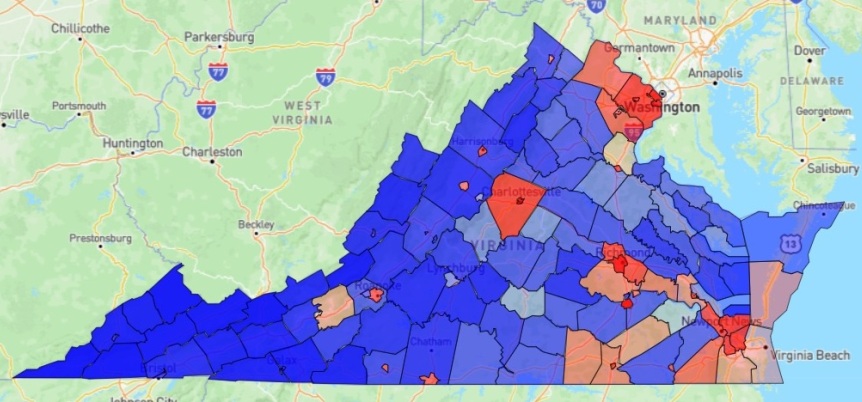
2024 presidential election result in Virginia
Background:
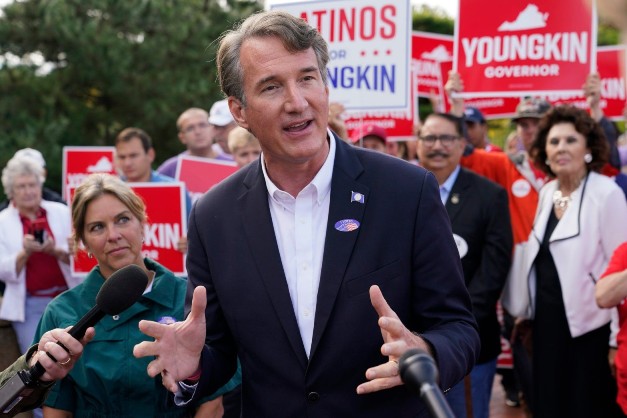
Photo credit: washingtonmonthly.com
The candidates: 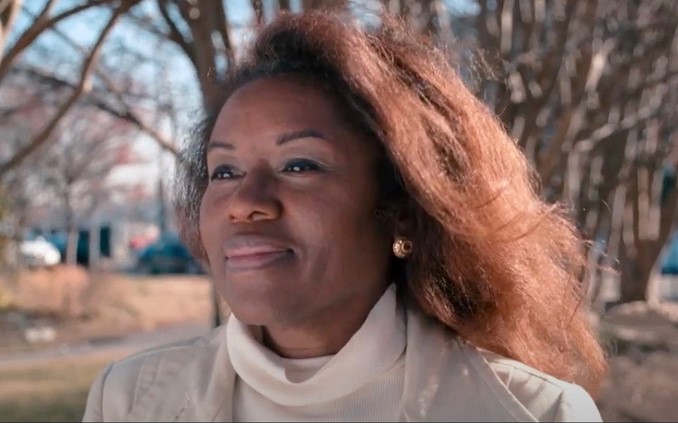
Photo credit: lifenews.com
GOP nominee Winsome Earle-Sears is an immigrant from Jamaica who arrived in the U.S. at the age of 6. She served in the United States Marine Corps for 4 years in the 1980's and became an American citizen during that time. Her political career commenced in the early 2000's when she won a race for the state House, upsetting a black Democrat who had been in office for two decades. She was the first Republican to win a state House seat in a majority-black district in Virginia since 1865. She later became the state's first female Lieutenant Governor (elected in 2021) and is the first black female to be elected to any statewide office in Virginia.
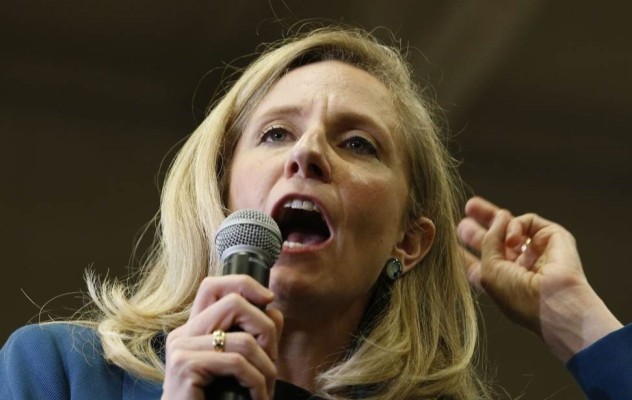
Photo credit: twitchy.com
Spanberger, a native of New Jersey, went from being a substitute schoolteacher and a postal inspector to (as of 2006) being a spy for the Central Intelligence Agency; a rather interesting career change, to say the least. When she first entered politics, Spanberger's CIA resume was sanitized so that it could be declassified and, according to ABC News, the former spook stuck "to carefully scripted lines, approved by the agency, when talking about her work" on the campaign trail.
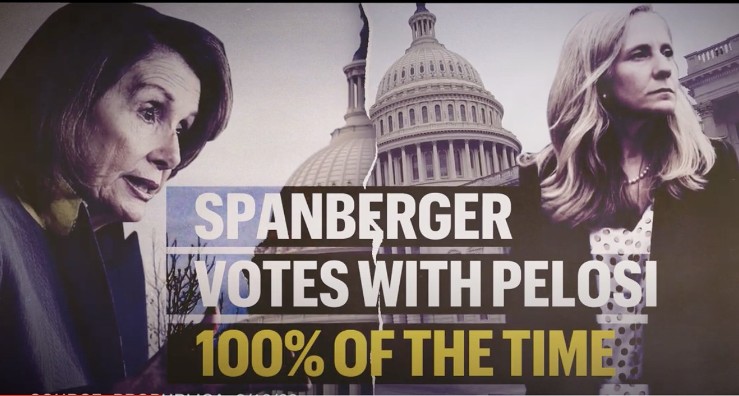
Photo credit: NRCC
Republicans picked up 13 House seats in 2020 but Spanberger's wasn't one of them although a serious effort was made. Her district, which had been rated as R+10 prior to the 2016 Democrat gerrymander, was still slightly "red" and Republicans had it high on their list of potential pickups. Spanberger, then as now, occasionally talks like a moderate and did cast a highly publicized (and highly choreographed) vote against Nancy Pelosi for Speaker in January, 2019. Spanberger then spent the remainder of her first term in Congress establishing her liberal bona fides, but was able to conceal that fact from the voters as she reverted back to her faux-moderate persona.
Taking some of these regions together, Virginia can be divided into three pieces of approximately equal electoral weight. Two of the three nearly always favor Democrats. NOVA is of course the most Democrat-infested area, teeming with people whose livelihoods depend on the federal The portion of the state which is included in the Piedmont / Southside / Shenandoah / SW Virginia regions accounts for just under 30% of the statewide vote and gives Republicans their biggest margins of any region. The statistically insignificant (barely 2% of the vote), lightly populated Chesapeake Bay counties also support Republicans lately, by almost exactly the same percentages as obtained in the Piedmont / Southside areas. The Greater Richmond and Hampton Roads regions together outnumber NOVA in total voters, though not by a lot. They solidly favor Democrats in most races, and if a Republican is going to win a statewide election he needs to come close to getting 50% here. Youngkin did that in 2021 (he received about 48%) but Ed Gillespie didn't in 2017 nor did Donald Trump or Hung Cao in 2024. The latter 3 GOP candidates mustered only about 42% or 43% there; Youngkin won statewide, the others did not. Conclusion: Unlike in North Carolina in 2024, where the unpopularity of one GOP candidate (Mark Robinson) dragged down the entire statewide Republican ticket although some Republicans won anyway, the presence of violent, feral racist Jay Jones as Democrat nominee for Attorney General has had no impact on other Virginia Democrats in 2025; in fact, Jones still retains about a 50-50 chance of winning himself according to left-wing pollsters. So any Jones Effect on the gubernatorial race which would assist Sears can likely be discounted as non-existent. As of October 15, campaign finance reports showed that CIAbby had raked in $53.8 million and disbursed $48.4 million. The Sears campaign lags far behind, running on about half of what the Democrat has done in both of those categories. There is also a wide disparity between the two candidates in terms of remaining cash-on-hand, with about a 3:1 advantage to Spanberger as we head into the final days of the campaign. The Lieutenant Governor race and the one for Attorney General will end up closer than the Sears-Spanberger duel, but Republicans are likely to lose at least one of those two downballot tilts, and quite possibly both. There is some chance that they could win both (while still losing for Governor), but that is less likely barring a significant change in fortunes between now and November 4. The Virginia state Senate has been in Rat hands since they picked up the two seats they needed in 2019. It's been status quo since then, with the Republicans needing one seat to forge a tie and two to take control. With the L.G. probably going Democrat in 2025, one seat isn't going to be enough. The state Senate map for this decade has been gerrymandered to favor Democrats, and under those conditions the GOP is doing well to merely be down 21-19. A similarly gerrymandered state House map also strongly favors Democrats; again, the GOP has done well to even keep it close. The forecast for this November is not sunny for Virginia Republicans at the state legislative level, and they are going to need to overachieve a little more if there is any hope of thwarting the agenda of "Governor Spanberger". Ugh. Tags:
2025
Governor
New Jersey
Virginia
| |||||||||||||||||||||||||||||||||||||||||||||||||||||||||||||||||||||||||||||||||||||||||||||||||||||||||||||||||||||||||||||||||||||||||||||||||||||||||||||||||||||||||||||||||||||||||||||||||||||||||||||||||||||||||||||||||||||||||||||||||||||||||||||||||||||||||||||||||||||||||||||||||||||||||||||||||||||||||||||||||||||||||||||||||||||||||||||||||||||||||||||||||||||||||||||||||||||||||||||||||||||||||||||||||||||||